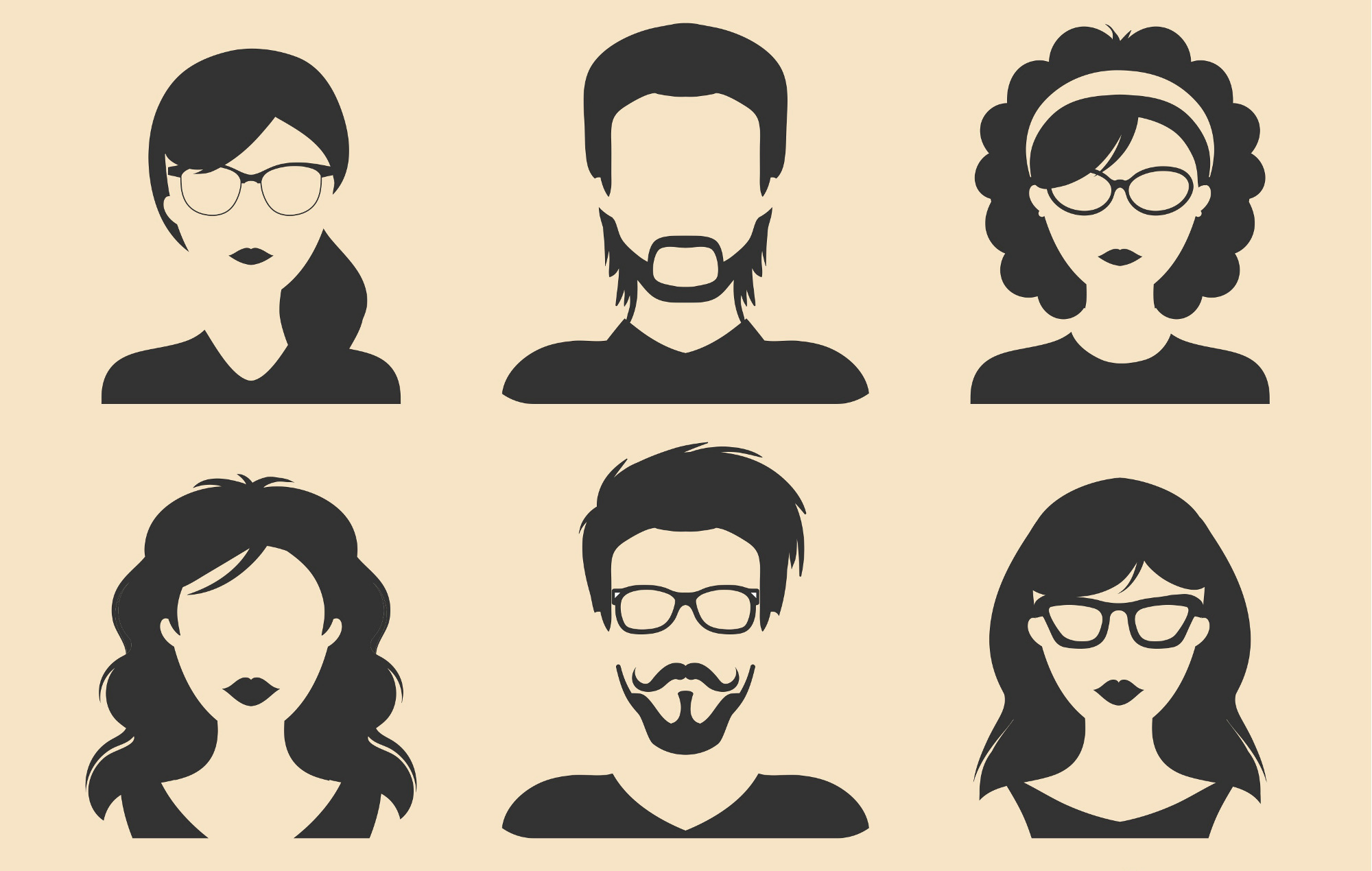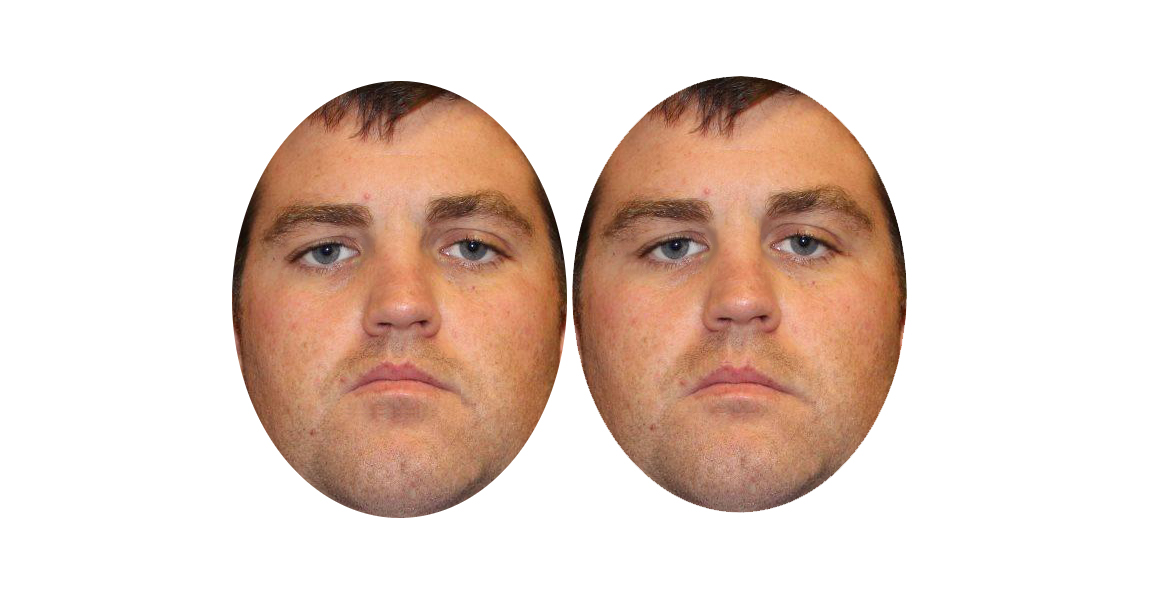What Is Face Blindness? - Science Friday
www.sciencefriday.com
Male and female faces, from Shutterstock
When Lisa Brown was about five, she got into a tiff with two friends who were brothers. It happened at their house after lunch, when she started interchanging their names. “They got very upset with me,” she remembers. But she wasn’t trying to provoke them.
Brown has prosopagnosia, commonly called face blindness, which means she has trouble recognizing familiar faces and learning to recognize new ones. To keep track of the brothers, she would usually memorize what color shirt each was wearing. But earlier that day, the boys had gotten dirty and changed, throwing her off.
Brown, who’s now 37, didn’t know that her difficulty with faces had a name until a few years ago, when her spouse heard a radio show discussing the topic of prosopagnosia and realized that she seemed to fit the description.
Brown later got in touch with researchers studying the subject, who confirmed that she met certain criteria for a diagnosis.
“It was very validating to know,” she says. “I have always believed my whole life that if I could just pay more attention, I would be better at [recognizing faces], and people wouldn’t get upset with me for it.”
Researchers recognize two types of prosopagnosia—a rare, acquired type, and a more common form called developmental prosopagnosia. People with the acquired type have lost the ability to recognize faces due to some sort of brain injury, such as a stroke.
For those with the other type, certain brain mechanisms failed to develop properly, perhaps for genetic reasons (it does seem to run in families).
While cases of acquired prosopagnosia have been known since the mid-19th century, the first report of developmental prosopagnosia didn’t appear until 1976. “It took us a lot longer to recognize it,” says Brad Duchaine, an associate professor in the Department of Psychological and Brain Sciences at Dartmouth College who has been studying prosopagnosia for years.
“You can imagine if you’re an acquired prosopagnosic, well, one day you could recognize people and the next day you couldn’t. So it’s much more apparent to people.”
“I have always believed my whole life that if I could just pay more attention, I would be better at recognizing faces.”
To perceive and recognize a face, the brain relies on a neural network of at least three core regions that seem to contribute to different aspects of face processing. (There’s debate over whether or not this network is specialized for processing faces alone, or if it’s also used to discriminate among other visual objects associated with expertise, such as birds for birders.) These regions are found in the
occipital and temporal lobes of both the right and left hemispheres, although the right side seems to be more active in face processing, according to neurologist Jason Barton, who runs the Human Vision and Eye Movement Laboratory at the University of British Columbia. (Barton’s team worked with Lisa Brown.)
Damage to different parts of this neural network can interrupt different aspects of the face-recognition process. For instance, work by Barton and others have shown that lesions in certain regions in the right occipital lobe can inhibit people’s ability to perceive faces—that is, faces just don’t register. “When they look at a face, they can’t see enough of the details in the face to know who that is,” says Barton. “It’s as if they’re looking at a face through a fog.”
For example, say you were to show someone with a lesion in the right occipital lobe side-by-side photos of a single face whose features have been moved around slightly in one of the pictures (see images below). She probably wouldn’t be able to tell you the difference between those images. (
Writer’s note: A number of readers have commented that they cannot see the differences between the two faces. Barton says that the differences might be more subtle than what would be appear in a test administered in an experimental setting. If you’re unable to discern the differences, you do not necessarily have prosopagnosia.)*
A person with damage to the core areas of the face-processing network in the occipital lobe would have trouble seeing the difference between these two images. (The eyes of the left face are farther apart than the eyes of the right face, and the left face’s mouth is higher than right face’s mouth). Note that an inability to discern the differences does not necessarily mean that you have prosopagnosia.* Courtesy of Jeffrey Corrow/Human Vision and Eye Movement Laboratory, Departments of Medicine (Neurology), Ophthalmology and Visual Science, University of British Columbia, Vancouver
In comparison, people who have a lesion in, say, the anterior temporal lobe—an area associated with memory, and considered an extended part of the face-processing network—are relatively better at distinguishing one face from another but tend to be worse at remembering faces they’ve seen before, according to Barton.
The end result is that both types of people—those with more trouble perceiving, and those with more trouble remembering—end up in the same place: unable to recognize familiar faces. “Neither subject would know which face you had shown them—the first group because they can’t see it accurately enough, and the second one because they can’t remember it,” says Barton.
It’s less clear what causes face-blindness in people with developmental prosopagnosia.
Neuroimaging studies have suggested that there are structural and functional anomalies in the brain’s wiring, according to Barton, but there’s no consensus on a defining abnormality or genetic marker. (For this reason, the line between having developmental prosopagnosia and being simply “bad” with faces can be blurry, according to Barton. “One of the things about any kind of human ability is that we’re not all the same,” he says. “There is a distribution of ability.”)
Most people who suspect that they have developmental prosopagnosia “tend to be just self-diagnosing,” says Duchaine. A more reliable diagnosis comes only after the administration of a battery of tests, which might include one called the
Cambridge Face Memory Test, which Duchaine
developed with Ken Nakayama. (The test asks participants to memorize a series of individual faces and then asks them to identify the faces they saw out of three-face lineups.)
Related Segment
Oliver Sacks and ‘The Mind’s Eye’
Prosopagnosia varies in severity, depending on the individual—that is, different people can have different degrees of difficulty recognizing and recalling faces. In a
2010 article for The New Yorker, the late neurologist Oliver Sacks—who said he had the developmental kind—wrote that he and others with “moderate prosopagnosia,” can, “after repeated exposure, learn to identify those they know best.” Lisa Brown, for instance, says that she always recognizes her wife. “It doesn’t matter if I’m expecting to see her or not,” she says. But if a neighbor were to approach her unexpectedly, she would have to sleuth out identifying clues.
At the very least, failing at face recognition is annoying. But the inability can have more serious repercussions. For instance, children with prosopagnosia “may have trouble making friends; they may have a lot of social anxiety,” says Kirsten Dalrymple, a research associate at the Institute of Child Development at the University of Minnesota. And you can imagine the potential risk of taking a kid with face blindness on a school field trip—should he get separated from his classmates, he’d have a harder time finding them.
To cope, people with prosopagnosia often develop workarounds. Some might focus on a person’s gait or posture, or a particularly distinctive feature about a face, such as a large nose. For her part, Brown says she’s “very good at identifying voices.” She also notices fashion choices (she spent many years as a seamstress), as well as glasses, piercings, and hairstyles. But if somebody changes her hair, she says, “I get lost.”
“Context also helps a lot,” adds Brown, who now works as a legal assistant. “If I approach someone at the courthouse, for example, and they’re behind the desk, I have a pretty good idea which of the three clerks I’m probably dealing with,” she says.
So is there a “cure” for face blindness?
The simple answer is no. Researchers have tried various treatment strategies with varying degrees of success and failure, but there’s no widely accepted approach. (For more on treatment efforts over the past 50 years, check out
this review in
Frontiers in Human Neuroscience.)
In a
2014 study appearing in the journal
Brain, a Harvard-based team reported modest results in a group of 24 people with developmental prosopagnosia who completed a three-week online face-training program. The program required that the subjects place computer-generated faces into two categories based on the spacing between the eyes and eyebrows and the spacing between the mouth and nose. The more quickly and accurately they were able to complete each task, the harder the program became.
The design was based on one theory that people with normal face recognition interpret all the parts of a face at once, “in this holistic or gestalt way,” says Joe DeGutis, an assistant professor at Harvard University and first author of the paper. Some research has suggested that people with developmental prosopagnosia don’t typically view faces in this manner, so the researchers wanted to see if their training program could improve that ability.
To cope, people with prosopagnosia often develop workarounds. Some might focus on a person’s gait or posture, or a particularly distinctive feature.
At the end of the three-week period, the team tested how well participants could discriminate among new faces viewed head-on, as well as from different angles. They did not show improvement on the latter, but they showed slight but statistically significant improvement distinguishing between faces viewed from the front. And participants who had made it to more difficult levels during the online training (there were 13 of them) showed the most improvement, which suggested that accomplishing the task swiftly or at more difficult levels (the researchers aren’t sure which) contributed to their progress. The better trainees also showed the most improvement on a couple other measures used to test a “gestalt” approach to face processing, compared with the worse trainees.
While his team doesn’t know what kind of staying power the treatment will have, DeGutis is optimistic about their approach. “I think we’re showing the proof of concept that it’s possible to enhance [facial recognition]” in people with developmental prosopagnosia, he says. His team just received funding from the National Institutes of Health to launch a much bigger study to test this treatment in conjunction with neural imaging so that they can see what’s actually changing in the brain. (And if you happen to experience significant difficulties recognizing faces, live in New England, and are interested in participating in training studies, you can email DeGutis at
[email protected]).
A few years ago, another team (which included Duchaine) also
reported somewhat encouraging results from a randomized, placebo-controlled, double-blind study investigating how the hormone oxytocin affects face processing in participants with developmental prosopagnosia. (Why oxytocin? Research on healthy subjects has shown that nasal spray of the stuff can improve memory for social stimuli such as faces, and that the hormone increases the time spent looking at the eye region, an area important for normal facial identification.)
After inhaling either an oxytocin or placebo nasal spray, 10 participants with developmental prosopagnosia completed two face-processing tasks—one that tested memory by requiring participants to view and recall a set of faces, and another that tested perception, requiring subjects to match “like” faces. Results showed an improvement on both the face memory and the face-matching test in the group that had taken oxytocin, but not in the control group.
What’s going on? The authors noted that past research has shown that oxytocin modulates activity in a face-processing region in the occipital lobe called the fusiform face area; they suggested that increased activity in that region might have contributed to the participants’ improvements. Or, perhaps the brain’s amygdala played a role. Several studies indicate that the amygdala—which is thought to act in concert with the face-processing network—is important for mediating the effects that oxytocin has on how the brain processes social cues. Future research involving neuroimaging would be necessary to reveal what oxytocin is actually doing in the brain in people with prosopagnosia, however.
In the meantime, as Oliver Sacks put it in the
New Yorker piece, “people with varying degrees of face blindness must rely on their own ingenuity, starting with educating others about their unusual, but not rare [at least with respect to developmental prosopagnosia] condition.” He noted that books, websites, and support groups are cropping up more and more, too, to help people with prosopagnosia share their experiences and recognition strategies “when the usual ‘automatic’ mechanisms have been compromised.”
*Neurologist Jason Barton says that the image of the two faces is a simulation of an experimental test but not identical to it, and so the differences between the faces might be more subtle than in a lab test. Being unable to identify the differences between the faces in this image does not necessarily mean that you have prosopagnosia. As with many human abilities, face recognition spans a spectrum of ability. This article was updated on February 19, 2016 to reflect this information.
Meet the Writer
@julieleibach
Julie Leibach is a freelance science journalist and the former managing editor of online content for Science Friday.
https://www.sciencefriday.com/articles/what-is-face-blindness/



